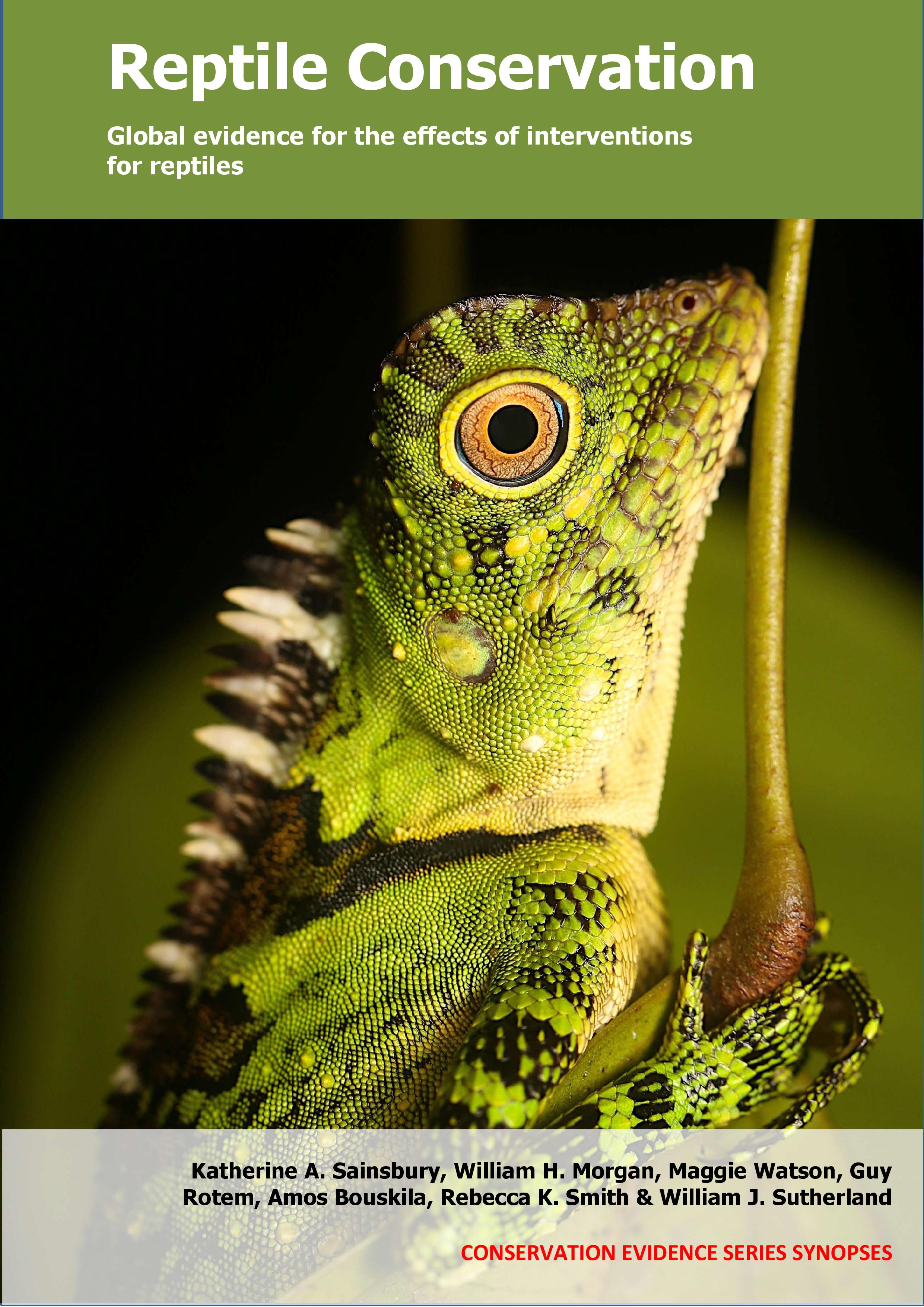Release accidentally caught (‘bycatch’) reptiles
-
Overall effectiveness category Awaiting assessment
-
Number of studies: 3
View assessment score
Hide assessment score
How is the evidence assessed?
-
Effectiveness
not assessed -
Certainty
not assessed -
Harms
not assessed
Study locations
Supporting evidence from individual studies
A replicated study in 1967–1974 in pelagic waters in the Caribbean Sea near Bermuda (Burnett-Herkes 1974) found that some accidentally-caught immature and some head-started green turtles Chelonia mydas survived at least several months in the wild. In total, 16 of 108 released accidentally-caught or head-started immature green turtles were recaptured. Nine turtles were recovered within 10 months, other recaptured turtles had spent up to 27 months in the wild. Most turtles were recaptured a few hundred metres to 14 km away from their point of release, except for one head-started turtle that was recaptured 2,315 km away from the release site after 10 months. In 1967–1971, eighty-nine green turtles were head-started in Costa Rica and released after approximately two years on the north and south coasts of Bermuda. In addition, 19 wild-born immature green turtles caught accidentally by local fisherman were tagged and released as part of the same programme.
Study and other actions testedA controlled study in 2001–2003 in pelagic waters on the Pacific coast of Costa Rica (Swimmer et al. 2006) found that sea turtles released back into the water after becoming caught on longline hooks travelled similar distances and dived to similar depths compared to free-swimming turtles. Longline-caught turtles travelled similar total distances (117–520 nautical miles) and distances each day (5 nautical miles/day) compared to free-swimming turtles (total distance: 50–443 nautical miles; 5 nautical miles/day). Longline-caught turtles made similar depth daily maximum dives (81–408 m) compared to free-swimming turtles (84–264 m). Longline-caught turtles made more deeper daytime dives than free-swimming turtles, which were more likely to make deeper dives at night (no statistical tests carried out, see original paper for details). None of the longline-caught turtles died during the study; one free-swimming turtle mortality occurred. In total nine olive ridley turtles Lepidochelys olivacea and one green turtle Chelonia mydas caught by fishermen were monitored using radio tags in November 2001–August 2003. Hooks were removed from the turtle’s jaw or mouth (except for one individual, see paper for details) and turtles were released. At the same time, five free-swimming olive ridley turtles were collected by the boat, radio-tagged and released for behavioural comparisons. On average, tags remained on line-caught turtles and free-swimming turtles for 54 and 60 days respectively.
Study and other actions testedA replicated study in 2015–2017 in three coastal sites of Jeju Island, the Republic of Korea (Jang et al. 2018) found that after releasing green turtles Chelonia mydas that were caught in pound nets near the capture site, all eight turtles survived. Turtles survived for at least 17–314 days and moved 36–1,393 km after being released. Five turtles stayed close to Jeju island and moved 36–581 km; one travelled west toward China and moved 514 km and two travelled east towards Japan and moved 489 and 1,393 km. In August 2015–September 2016, eight healthy turtles (7 juveniles, 1 adult) that were caught accidentally in pound nets (approximate size 25 x 15 x 10 m) were fitted with satellite transmitters before being released near the capture site. Transmitters were attached to the carapace using polyester resin and fiberglass cloth. Turtles were tracked for 17–314 days, with a maximum of one location/individual/day retained for analysis.
Study and other actions tested
Where has this evidence come from?
List of journals searched by synopsis
All the journals searched for all synopses
This Action forms part of the Action Synopsis:
Reptile Conservation
Reptile Conservation - Published 2021
Reptile synopsis





)_2023.JPG)














